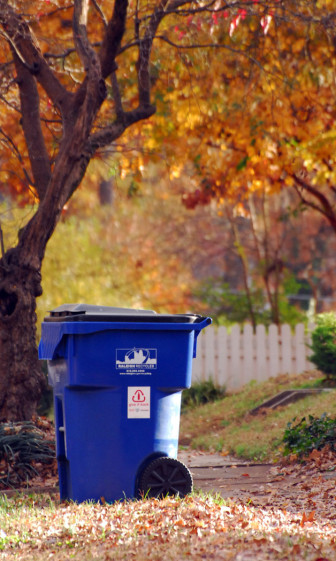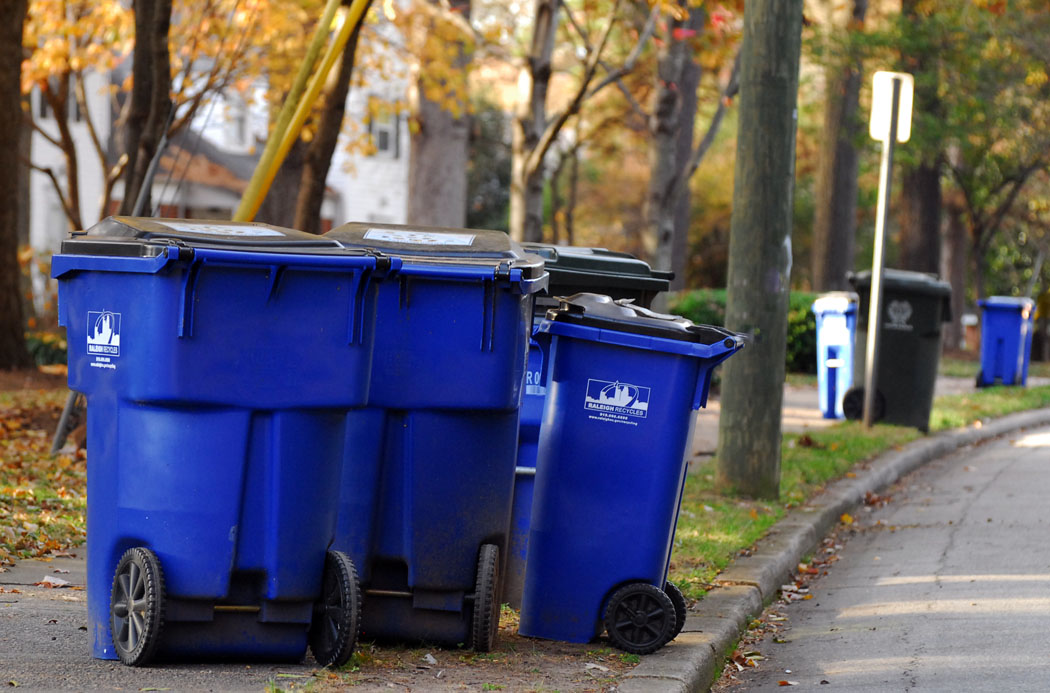The Budget and Economic Development Committee met Tuesday to receive updates about the Residential Recycling Program and the Watershed Protection Task Force and to vote on proposed recommendations for the future directions of both.

Karen Tam / Raleigh Public Record
A task force is in the works for the city\’s Residential Recycling Program
The staff overseeing the Residential Recycling Program proposed to the committee that a task force be created that “will make recommendations to the City Council and City staff on waste reduction goals, potential guiding principles and implementation strategies,” according to Tuesday’s agenda.
Also according to the agenda, the task force would have two main objectives—“to identify waste reduction goals and to further evaluate the strategies outlined in the Comprehensive Plan’s Material Resource Management plan through a set of guiding principles.”
The task force would include key stakeholders from around Raleigh, including but not limited to Wake Up Wake County, Shaw University, Raleigh Citizens Advisory Council, the Triangle Apartment Association, and the Chamber of Commerce.
The budget and economic development committee, which consists of Councilor Russ Stephenson, Councilor Eugene Weeks, and Mayor Nancy McFarlane, seemed to have no disagreements with the proposal save for a more comprehensive representation of Raleigh’s population.
Councilor Weeks noted that the proposed task force needed “representation from the neighborhoods,” while Mayor McFarlane was interested in the task force having some type of representation from senior citizens and the Hispanic community.
In regard to the proposal of allocating part of the budget for hiring an external moderator within the task force, Councilor Stephenson noted that the task force will have “a wide range of viewpoints that need to be consolidated rather than mediated.”
The proposal was met with unanimous approval with a recommendation for added membership within the task force.
The second item on the agenda concerned ten recommendations from the Watershed Protection Task Force. They include items relating to alternate nutrient population removal projects, program expansion into the Upper Swift Creek Watershed, a centralized review process for innovative water protection practices, and the rate increase from 10 cents per 1,000 gallons of potable water use to 15 cents per 1,000 gallons of potable water use.
The individual presenting the information to the committee said that the Watershed Protection Task Force is “looking for some directions on the recommendations,” including the “recommended change in the current review process.” He added that the proposed review committee would include “experts in the field” and “wouldn’t be dominated by land trusts and staff.”
Kenny Waldroup, the Assistant Public Utilities Director, added that the “review committee that staff is suggesting would grow over time,” specifically “when we identify experts in those other approaches.”
One concern raised by committee was that the Watershed Protection Task Force has no “points” in the new property selection process for the property’s ability to be developed into a usable water source.
“So if we’re looking at water quality,” McFarlane said, “have we considered money to target that?”
The money currently goes to computer modeling upgrades as well as outreach and education. The money is also being distributed between land trusts that pay workers who locate, evaluate, and examine the properties being considered.
There was a great deal of discussion about addressing the need for the ability to quantity the benefits of purchasing a particular property. Stephenson said that what he sees staff doing in the future is the ability to improve the ability to quantify benefits of a particular property.
Of the proposed rate change, McFarlane said, “I would ask that we see this as the heart of our budget.”
She also added that they needed to wait until the budgetary process next spring before making a decision about the rate adjustment, as well as wait to “see what the General Assembly is going to do and other impacts.”
The committee voted to adopt staff recommendations 1-9 and hold recommendation 10, which concerned the rate increase, until next spring.
